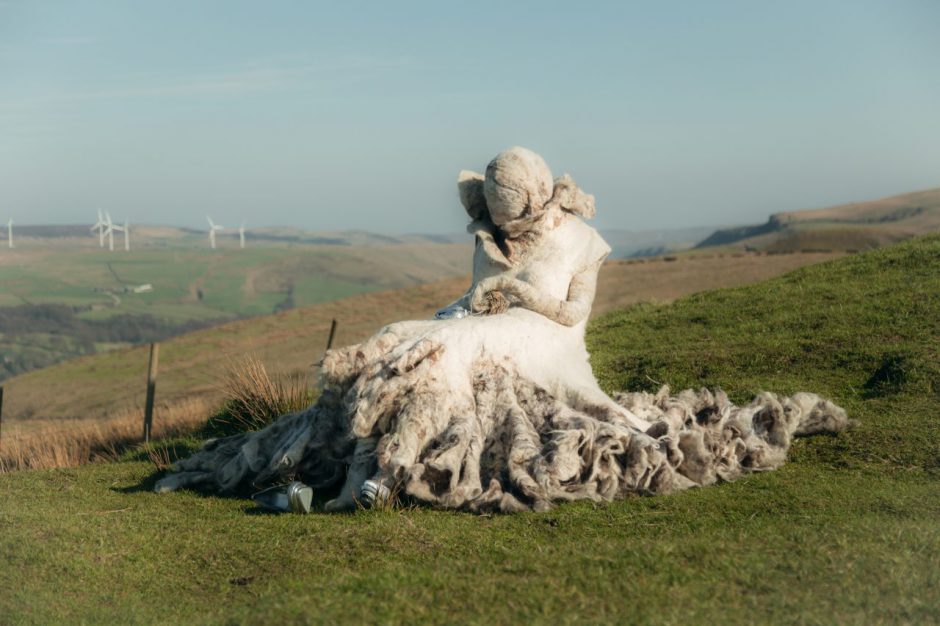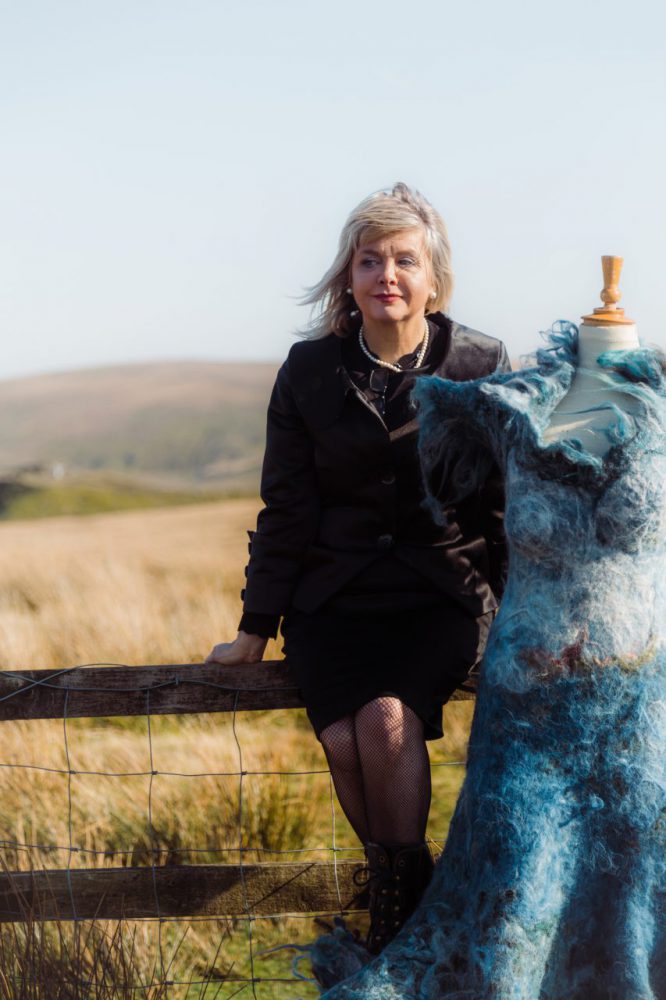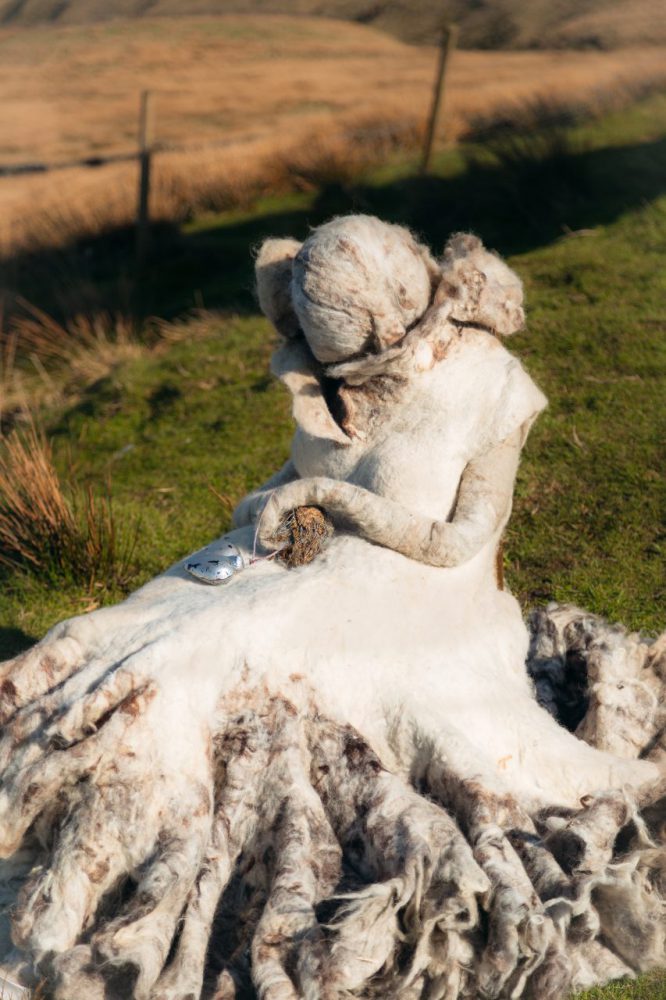
We spoke to textile artist Catherine Kaufman, appearing at The Knitting & Stitching Show this year, about early family influences, using and crafting wool, and even the spiritual powers of wool. To see her incredible work yourself make sure you get tickets to The Knitting & Stitching show here.
Catherine, can you tell us a little about yourself and how you became a textile artist?
I believe now that I always was a textile artist from being a very young child. I was always making and crafting and sewing. Down to my first kindergarten experiences with making paintings, sewing and playing stickle bricks and fuzzy felt. The nature table in the class room was always my favourite thing. My Father ran an antiques business and I believe this had a profound influence on my work, being surrounded daily by great works of art and sculpture from being such a young child. So, then life led me along this great journey of events to work at my chosen craft, my love needle felt.

What can visitors to The Knitting & Stitching Show expect from your Woolly Queen exhibition?
Visitors can expect to see my collection of needle felted sculptural garments and figures and tapestry. I work with literature, myth and legend for my inspiration and ideas. I work with the female and try and take her story and revisit her … I portray my feelings and ideas on the character I choose to make. I try to repair or renew in some way that is personal to me, so my work is ambiguous and somewhat autobiographical.
Do you find the creative process and the physical act of making therapeutic?
Yes, I find the creative process so therapeutic. It is the perfect way for me to release my anxieties and insecurities. I generally work things out in my mind when I am working for long periods, possibly hours and hours, in repetitive work. Making my work gives me great peace of mind. It truly is a labour of love.
You are passionate about wool – what is it that makes wool such an attractive material to work with?
Wool has great resilience. It is strong and does not need any fixing. It joins together all by itself with just help from the needle. Wool is readily available as in my Lancashire Valley I am surrounded by sheep farms. This makes my materials affordable and accessible to me.
Wool is organic and natural - this is very important to me in a world of the synthetic. Wool needs no special equipment to process - I can simply process my wool in my kitchen at home and create on my large kitchen table. This is where it all happens for me. This makes me self-sufficient and independent. I need no electricity or fancy tools or money to create.

You have described the process of sculpting with needle felted wool as ‘magical’. Can you tell us more about that?
The symbolism and iconography of the sheep and the lamb has religious and great spiritual power. Wool has a spiritual quality that has been documented and illustrated in times past. Wool has always been held in high regard. It has protective and warming qualities so is life sustaining and the shepherd has a very important job looking after the sheep so therefore life. I have great respect for the gentle and soft wool I work with.
The large scale of your work means the making process is highly labour intensive – you must have incredible patience. As a result, do you find that you form an emotional attachment with your sculptures?
Yes, my work is highly labour intensive and I have enormous amounts of patience. I do form a very strong bond with my work from ideas to creations and the work at some point takes over and makes itself. I notice at a point the work speeds up and takes over and then I get a little shiver as I feel the work has become stronger than me at some point. The work lets me know when it’s finished - there is no plan, no designs beforehand, just an idea that spills out and gets created. Then I love the figures. All my work I have a soft spot for.
Do you think that textile art is taken less seriously than other forms of art? If so, is it because many textile artists are women?
Yes I do think textile art is taken less seriously than other forms of art. This maybe because textile work was in the past know as traditional women’s craft work and a necessity for women to work at these traditional skills at home or in factories to make a living. The women were very low paid and this was their only way to earn a hard and meagre living. It is therefore important for women through education to challenge the world on this and promote textile art as high art.
Catherine Kaufman‘s exhibition, Woolly Queen, is at The Knitting & Stitching Show London at Alexandra Palace from 10th-13th October 2019.
Keep up to date with your favourite artists, priority bookings and exclusive offers from See Tickets:
Comments are closed.